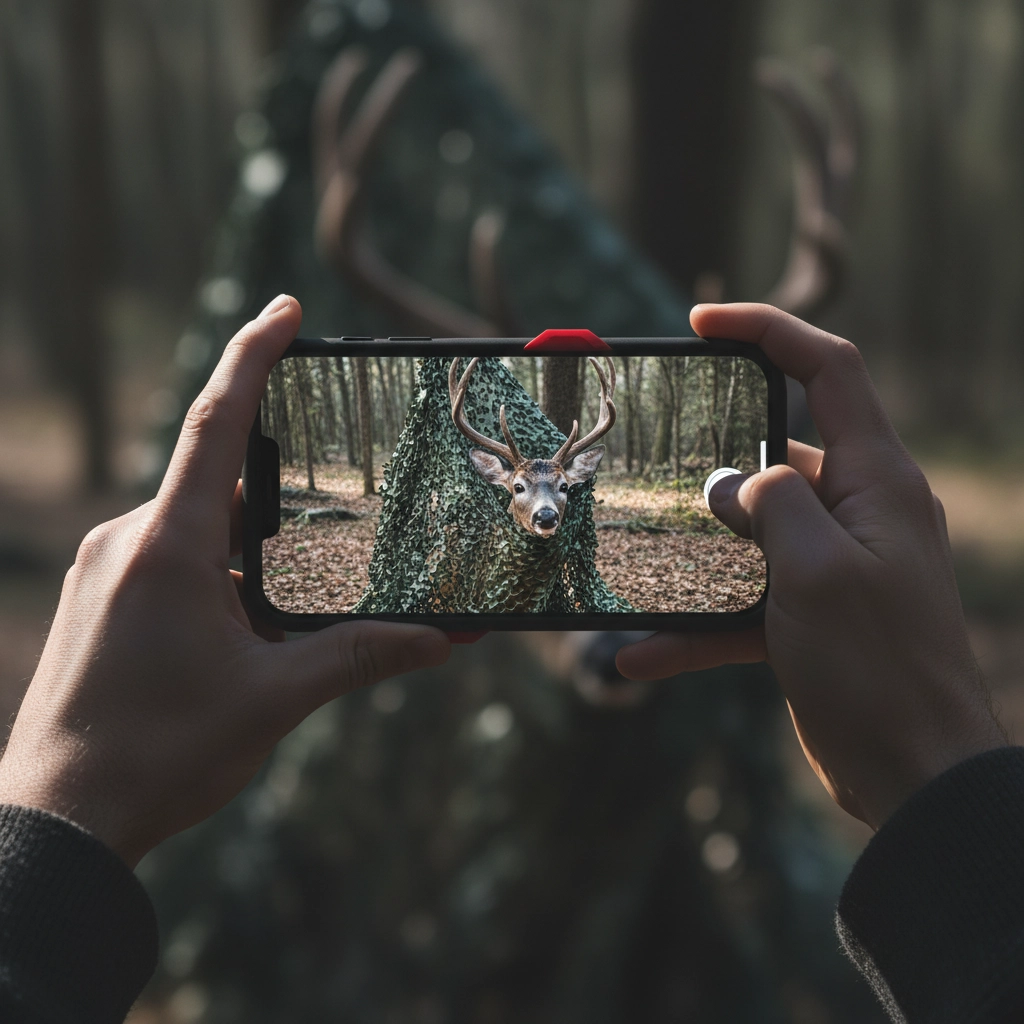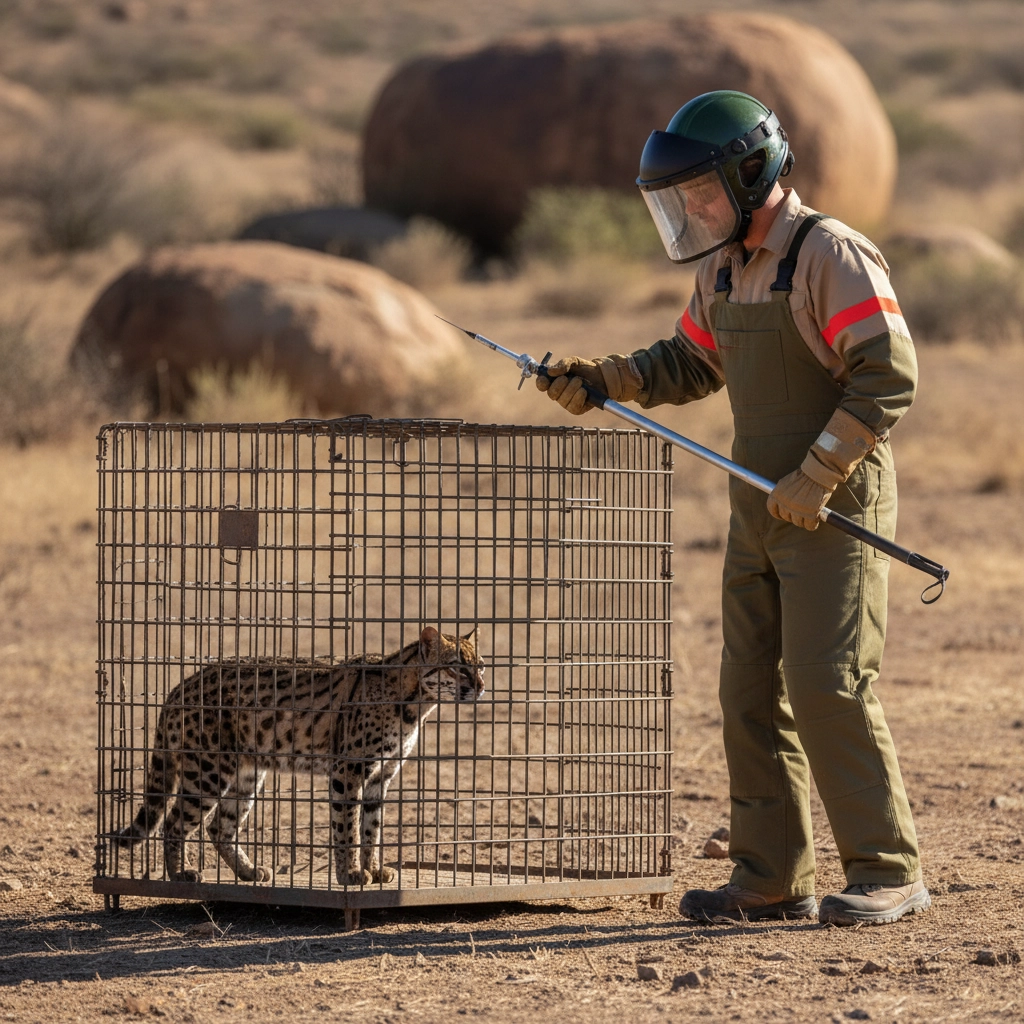What to Do If You Find a Trapped Wild Animal: A Quick Guide for Property Owners
- Targeted Wildlife and Pest Solutions

- Oct 2
- 5 min read
Finding a wild animal with its head or body trapped on your property can be alarming. Whether it's a raccoon with its head stuck in a jar, a deer tangled in netting, or a squirrel caught in fencing, your immediate response matters for both your safety and the animal's wellbeing.
The key is knowing when to help and when to step back. Most situations require professional intervention, but understanding the right steps to take can make the difference between a successful rescue and a tragedy.
Your First Priority: Safety Assessment
When you discover a trapped animal, resist the urge to rush in and help immediately. Your safety and the animal's welfare depend on a careful approach.
Maintain a safe distance of at least 15-20 feet from the trapped animal. Even small animals can inflict serious injuries when panicked or in pain. A trapped animal is already stressed and may perceive any approaching movement as a threat.
Secure the area by bringing children and pets inside your home immediately. Wild animals can carry diseases, and their unpredictable behavior when trapped poses risks to everyone nearby.
Observe the animal's condition from your safe distance. Note whether the animal appears injured, how long it may have been trapped, and if it's showing signs of distress like excessive struggling or labored breathing.
Quick Situation Assessment
Before contacting professionals, gather key information that will help responders make the right decisions:
Document the scene with photos if you can do so safely from a distance. Visual evidence helps wildlife experts assess the urgency and plan their approach.
Note the animal species as accurately as possible. Different animals require different handling techniques and safety precautions.
Assess the trap type - is the animal caught in human-made materials like netting, wire, or containers? Or is it stuck in natural elements like tree branches or rock crevices?
Time factors matter - an animal trapped for hours faces dehydration and increased stress compared to one just discovered.
Who to Contact in Ontario
In Ontario, specific professionals are legally authorized to handle trapped wildlife situations. Knowing who to call can save precious time.
Wildlife custodians are your primary resource. These trained individuals are the only people legally permitted to provide care to sick, injured, and orphaned wildlife with the goal of returning them to the wild. They have the expertise and equipment needed for safe animal removal.
Licensed wildlife agents can also help with trapped animals. These professionals must meet specific criteria, including valid trapping licenses and proper training for wildlife control situations.
Local conservation authorities often maintain lists of authorized wildlife rehabilitators in your area and can provide immediate guidance over the phone.
Veterinarians experienced with wildlife can provide emergency care if the animal appears severely injured, though they'll typically work alongside wildlife custodians for the best outcome.
Contact these professionals before attempting any rescue. Ontario law generally prohibits keeping wildlife, though you may temporarily possess trapped animals for up to 24 hours if you're transferring them directly to authorized caregivers.

What You Should Never Do
Well-meaning attempts to help can often make situations worse or create legal problems. Avoid these common mistakes:
Don't attempt to free the animal yourself unless you have proper training and equipment. What appears to be a simple removal often involves complex considerations about animal behavior and injury prevention.
Never feed or provide water to a trapped animal. This can create dependency, worsen certain medical conditions, or increase the animal's stress levels.
Avoid using improvised tools like sticks, ropes, or household items to attempt removal. These can cause additional injuries or frighten the animal into more dangerous positions.
Don't handle the animal even if it appears calm or unconscious. Wild animals can carry diseases transmissible to humans, and even small animals can inflict serious bites or scratches.
Resist the urge to comfort or pet the animal. Your presence, however well-intentioned, adds to the animal's stress and may complicate professional removal efforts.
Immediate Care While Waiting for Help
While waiting for professional assistance, you can take steps to minimize the animal's distress without putting yourself at risk:
Create a quiet environment by keeping noise levels low and limiting foot traffic in the area. Turn off radios, ask neighbors to keep pets quiet, and avoid using power tools nearby.
Provide indirect shelter if weather conditions are harsh. Position a tarp or umbrella to block direct sun, rain, or wind, but maintain your safe distance and avoid creating enclosed spaces that might increase the animal's panic.
Monitor from afar for changes in the animal's condition. If it becomes unconscious, shows signs of severe distress, or its condition deteriorates rapidly, communicate this immediately to the professionals you've contacted.
Document any changes with timestamped photos if possible. This information helps wildlife experts adjust their approach and prioritize response times.

Understanding the Legal Framework
Ontario's wildlife protection laws are designed to ensure both animal welfare and human safety. Understanding these regulations helps you respond appropriately:
Professional authorization is required for most wildlife interventions. Attempting to help without proper credentials can result in legal consequences, even when your intentions are good.
Property damage situations have different rules. If an animal is actively damaging your property, you have more options for intervention, but trapped animals requiring rescue fall under wildlife rehabilitation laws.
Emergency exceptions exist for immediate threats to human safety or when an animal faces imminent death. However, these situations still require professional follow-up care.
Prevention: Reducing Trap Risks on Your Property
The best approach to trapped animal situations is preventing them from occurring in the first place:
Secure trash containers with tight-fitting lids and consider animal-proof latches for areas with frequent wildlife activity. Clean containers regularly to reduce odors that attract animals.
Remove or secure small containers like jars, cans, or bottles that could trap animal heads. Even discarded yogurt containers can become deadly traps for small mammals.
Inspect fencing regularly for gaps, loose wire, or damaged sections where animals might become entangled. Replace or repair problem areas promptly.
Trim vegetation around structures to prevent animals from becoming trapped while seeking shelter or food sources.
Install proper chimney caps and vent covers to prevent animals from falling into or becoming stuck in these areas.

When to Act Quickly vs. When to Wait
Some situations require immediate professional response, while others allow time for proper planning:
Immediate action needed:
Animal appears unconscious or severely injured
Dangerous weather conditions threaten the animal's survival
The trap is causing obvious injury or cutting off circulation
Young animals are separated from parents for extended periods
Professional planning time available:
Animal appears alert and not in immediate distress
Weather conditions are mild
The trap doesn't appear to be causing injury
Adult animals in stable positions
Supporting Professional Rescue Efforts
When help arrives, you can assist the professionals by:
Providing detailed information about when you discovered the animal, any changes you observed, and specific details about the trap type.
Maintaining crowd control by keeping family members, neighbors, and pets away from the work area.
Following instructions from wildlife experts, who may ask you to help create barriers, provide tools, or assist with transportation arrangements.
Documenting the rescue if professionals approve, as this information can be valuable for preventing similar incidents.
Your quick thinking and proper response to a trapped animal situation protects both wildlife and your family. Remember that professional wildlife experts have the training, equipment, and legal authority needed for safe, effective rescues.
When you encounter a trapped animal on your property, take a breath, assess safely from a distance, and reach out to qualified professionals. Your measured response can mean the difference between a successful rescue and a preventable tragedy.
Comments